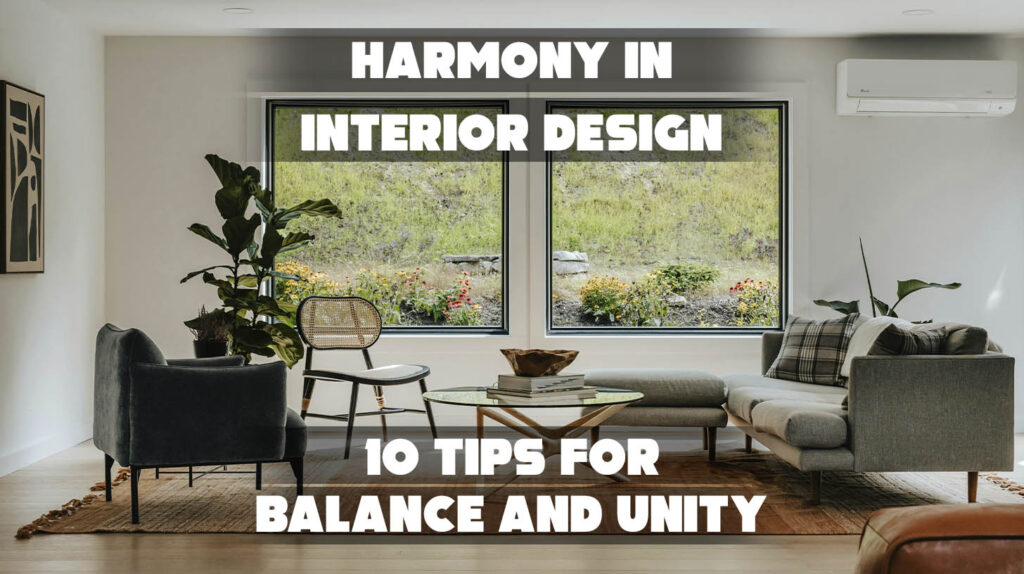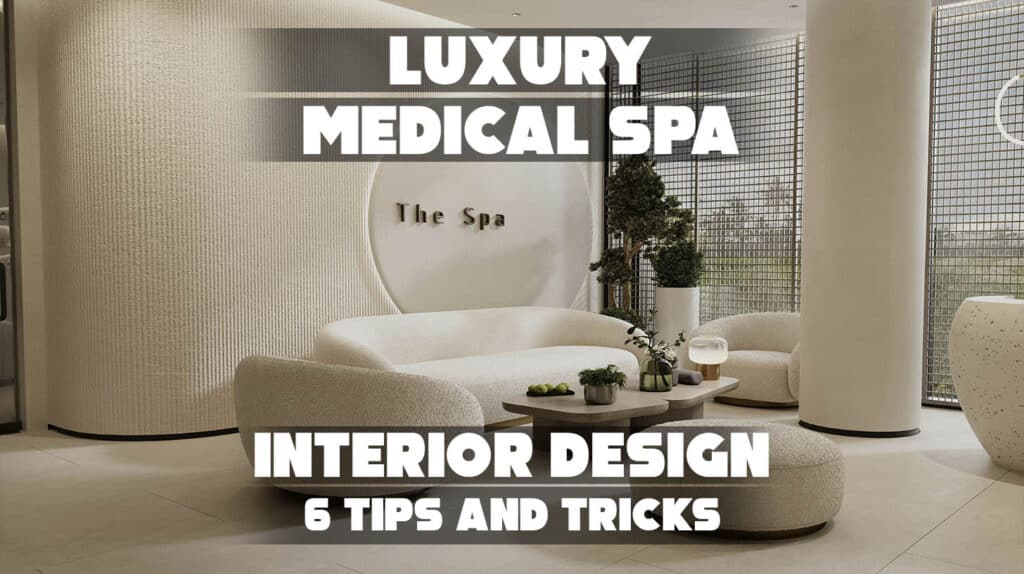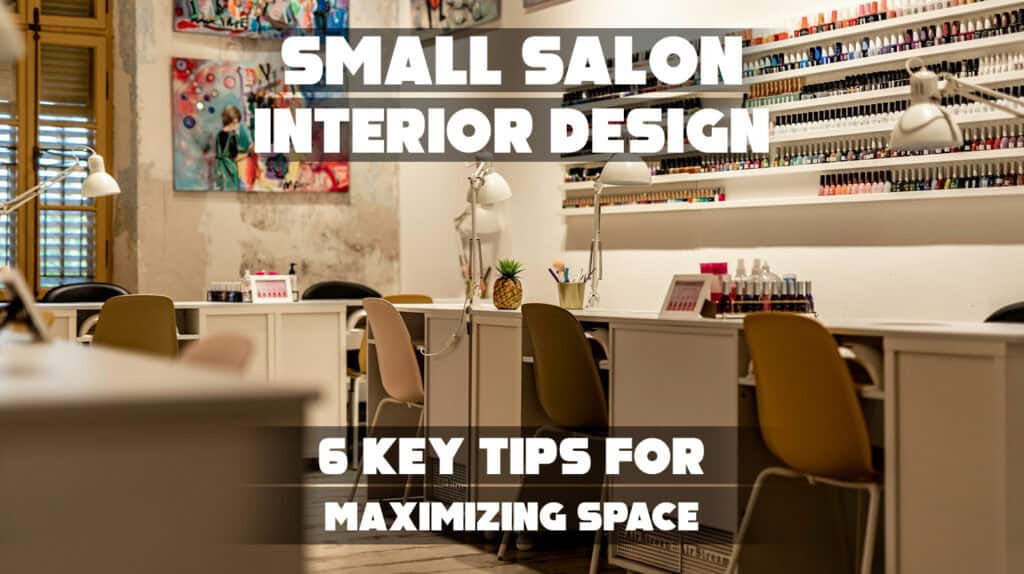Have you ever dreamed of creating a home that feels both elegant and timeless? Many homeowners long for an interior design that captures classic beauty but aren’t sure where to begin.
You are the visionary, seeking sophistication without sacrificing comfort — and you’re not alone. As your guide, we bring deep expertise in the Renaissance era, blending art, architecture, and history to craft truly breathtaking modern spaces.
In this article, you’ll discover:
- Core characteristics of Renaissance elements in interiors
- Architectural features like ceilings, columns, and fireplaces
- Color palettes, materials, and furniture essentials
Follow these steps to unlock a world where beauty, balance, and grandeur define your home’s story.
- 1. Defining Renaissance Interior Design
- 2. Architectural Elements in Renaissance Interiors
- 3. Color Palettes and Materials in Renaissance Interior Design
- 4. Furniture and Decorative Arts In Renaissance Intrerior Design
- 5. Modern Interpretations of Renaissance Interior Design
- Renaissance Interior Design: A Recap
- FAQ
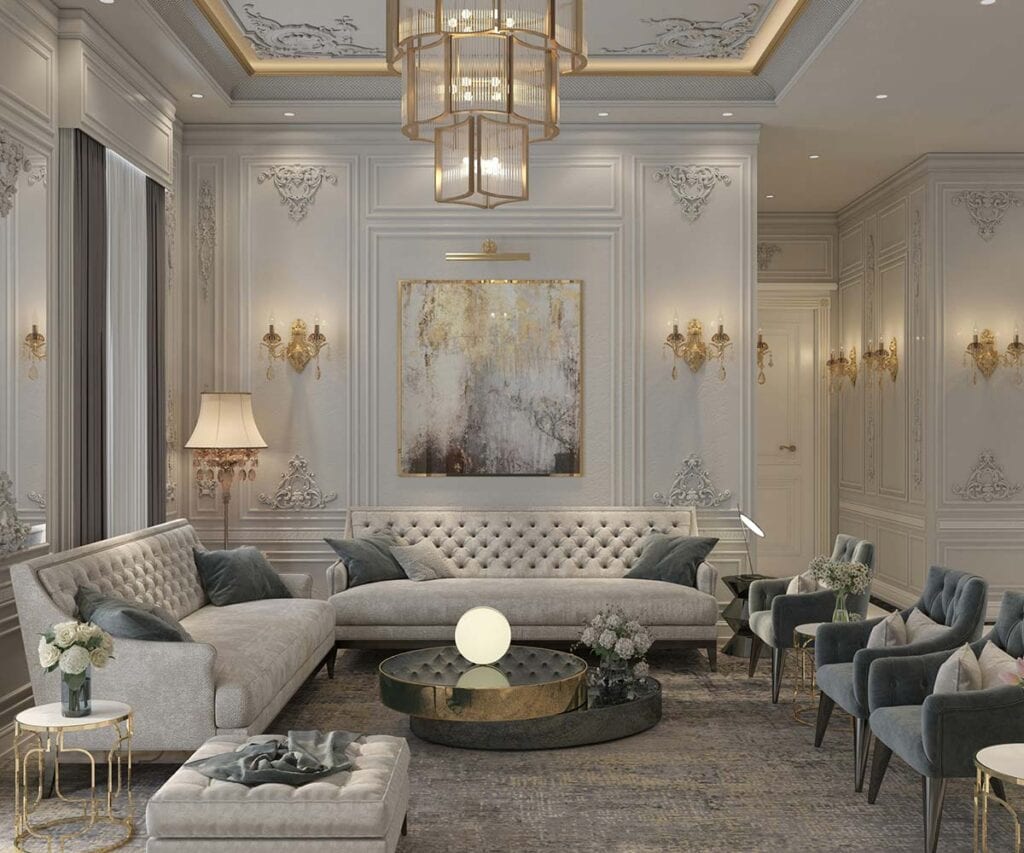
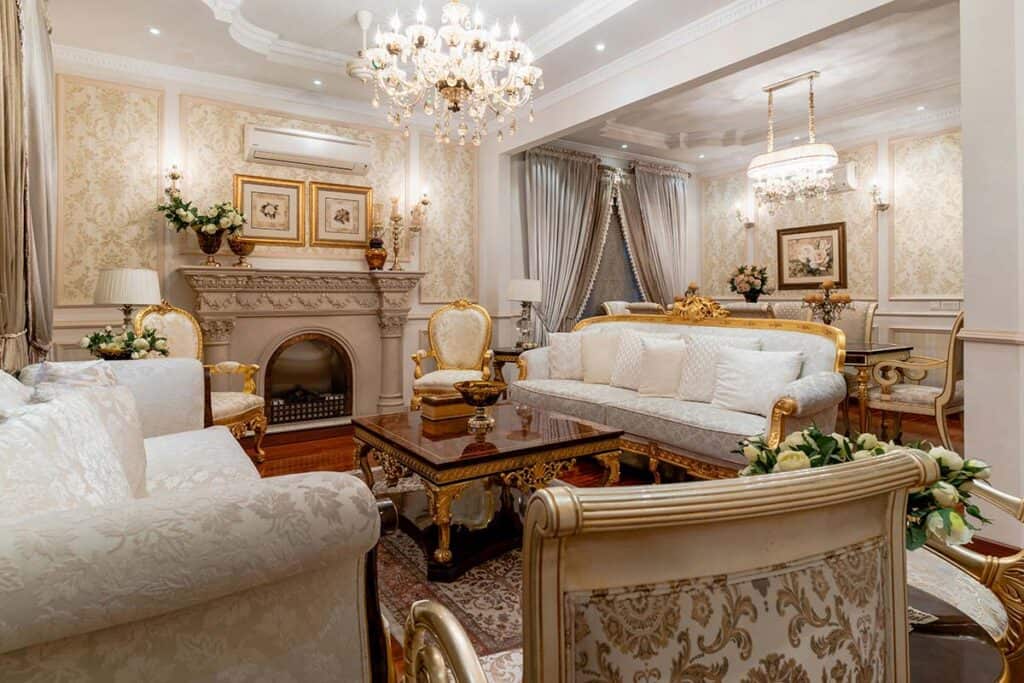
1. Defining Renaissance Interior Design
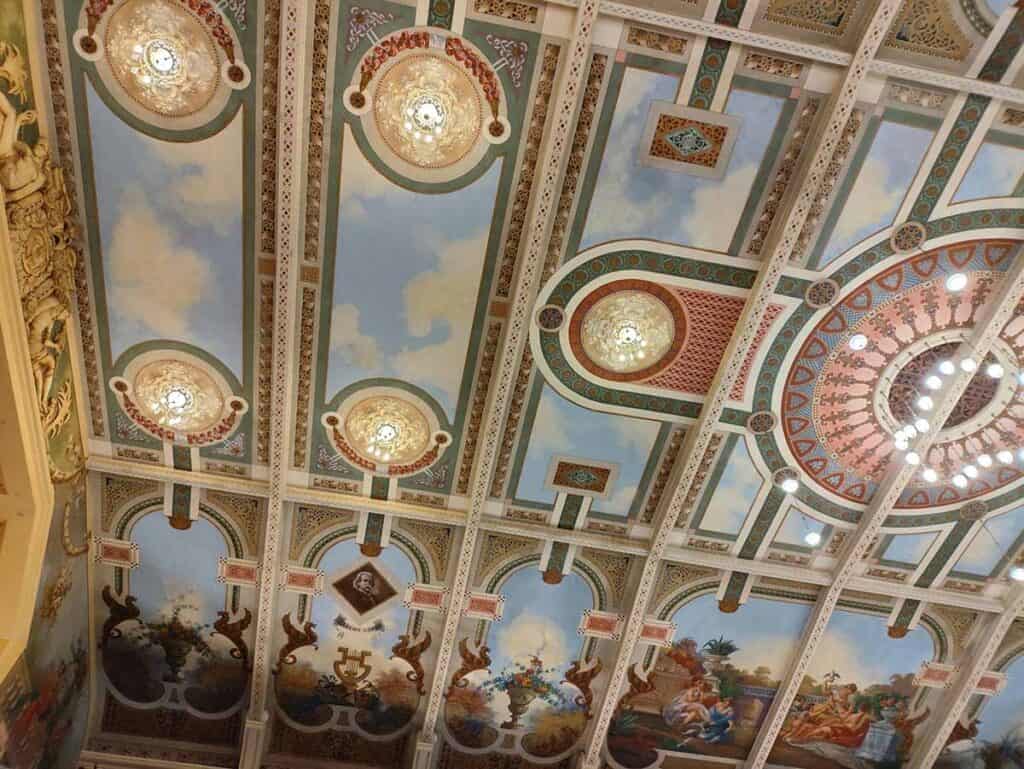
Renaissance interior design draws heavily from classical ideals, focusing on harmony, symmetry, and refined detail. It combines artistic techniques with architectural innovation to create spaces that emphasize balance and timeless elegance. This style is marked by distinctive features that continue to influence interiors today.
See also Pattern In Interior Design
Historical Context and Origins
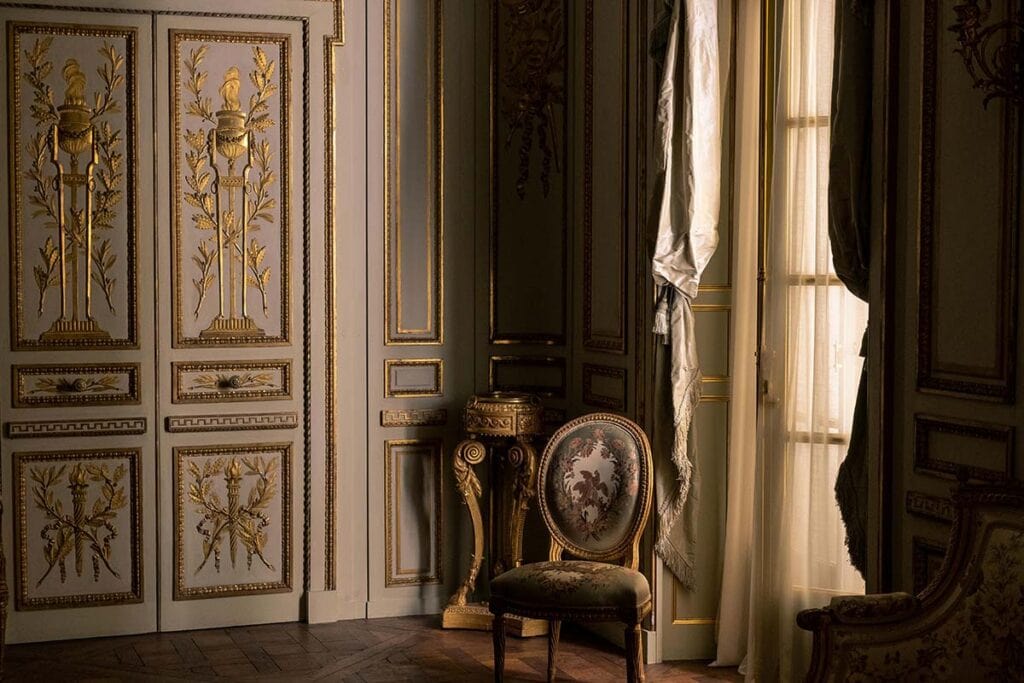
Renaissance interior design emerged in 15th-century Italy as a revival of classical Greek and Roman aesthetics. It coincided with a period of cultural rebirth that prioritized humanism, art, and scientific discovery.
Architects and designers began incorporating principles of symmetry and proportion drawn from antiquity into homes and public buildings.
This design movement responded against the more ornate medieval Gothic style by favoring clarity and classical beauty. It spread from Italy to the rest of Europe during the 16th and 17th centuries, influencing furniture, architectural elements, and decorative arts.
Renaissance interiors often served as a statement of wealth and scholarly taste.
Core Characteristics of renaissance interior design
Renaissance interiors are defined by key elements such as symmetry, balance, and classical motifs. Common features include vaulted ceilings, marble flooring, and four-poster beds, embodying a sense of beauty and order.
Walls were frequently adorned with frescoes and trompe-l’œil, techniques creating depth and artistic illusion.
Decorative details often included columns, pilasters, and ornate moldings inspired by ancient temples. Furniture combined functionality with elaborate carving, emphasizing craftsmanship. The use of rich materials like marble and wood contributed to an overall atmosphere of timeless elegance and refinement.
Influence on Modern Interiors
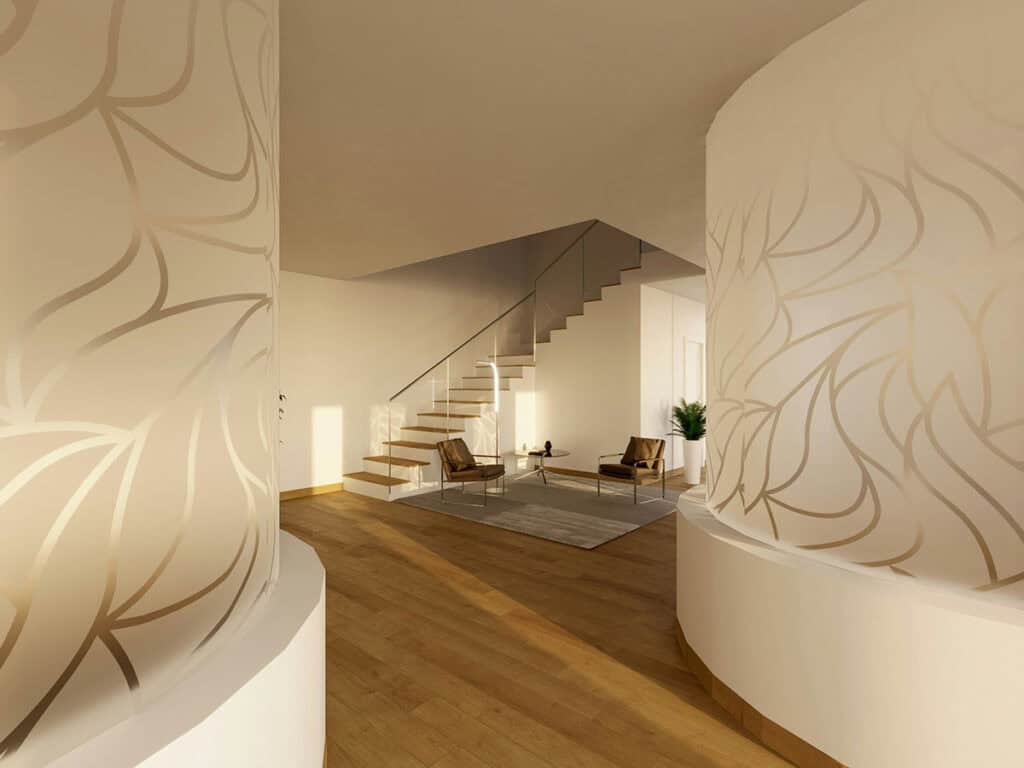
Renaissance style continues to inspire contemporary elegance in interior design. Modern interpretations retain the focus on symmetry and classical beauty but adapt materials and scale to today’s standards.
Elements such as balanced layouts, detailed moldings, and grand ceilings often appear in high-end residential and public spaces.
Designers use Renaissance principles to evoke a sense of permanence and sophistication without overwhelming simplicity. Features like marble surfaces and ornamental details connect modern interiors to this historic tradition.
This continuity illustrates the enduring appeal of Renaissance interiors as a source of inspiration for elegant and thoughtful design.
2. Architectural Elements in Renaissance Interiors

Renaissance interiors emphasize structured, balanced design influenced by classical antiquity. Key features include detailed ceilings, stately columns, and prominent fireplaces, all crafted to convey harmony and grandeur within living spaces.
Ceilings and Beams
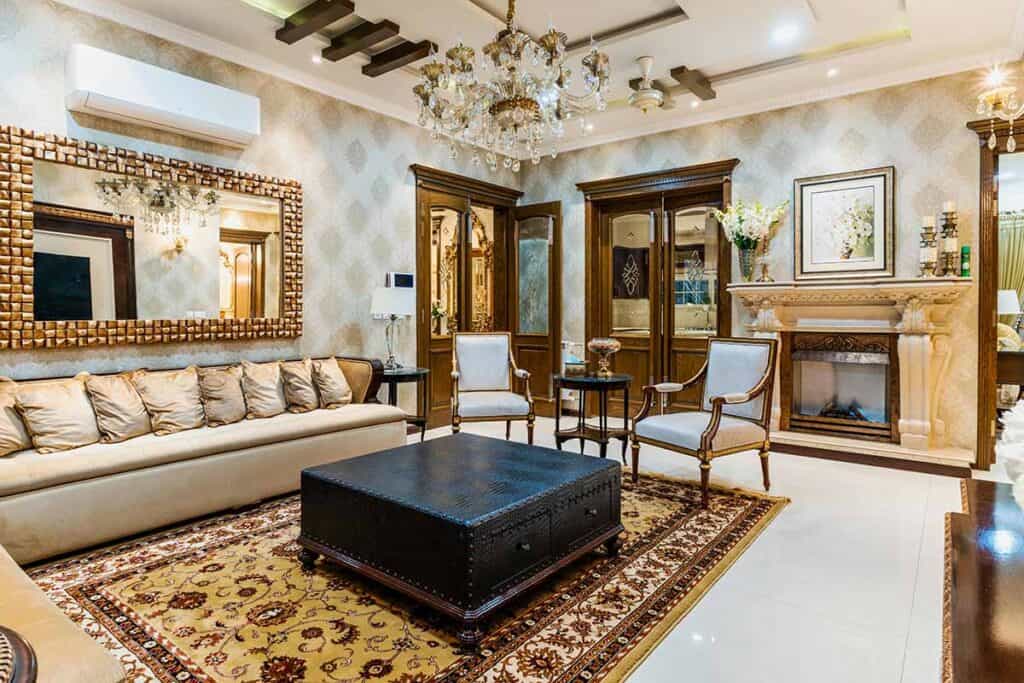
Ceilings in Renaissance interiors often feature vaulted designs or intricately carved wooden beams. Vaults showcase engineering skill and provide a spacious, open feel, while wood beams are richly decorated with patterns or painted motifs.
These ceilings highlight the era’s focus on symmetry and proportion, echoing classical architectural principles. In some rooms, coffered ceilings add depth and texture, reflecting the Renaissance style’s dedication to craftsmanship.
Columns and Arches
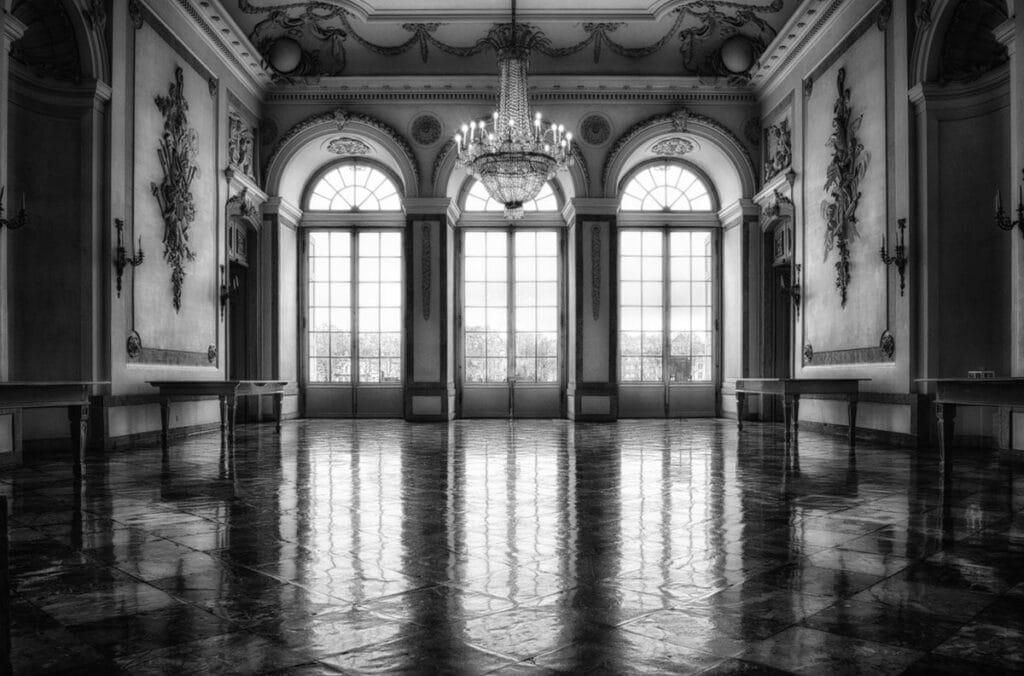
Columns are integral to Renaissance interiors, directly borrowing from classical orders like Doric, Ionic, and Corinthian. They typically have clear bases, shafts, and capitals, often ornately decorated. These columns support arches, which feature rounded, semicircular shapes rooted in Roman design.
Arches allow for open room transitions and add elegance to interiors. Pilasters—flat, decorative columns attached to walls—are also common, enhancing the sense of order and balance typical of Renaissance architecture. These elements frame spaces while maintaining classical harmony.
Fireplaces and Mantels

Fireplaces in Renaissance homes are large and central, often made from marble or stone, reflecting wealth and stability. Mantels surrounding fireplaces are elaborate, featuring detailed carvings, classical motifs, and sometimes gilded embellishments.
These fireplaces serve as focal points, combining functional warmth and ornamental design. The use of classical symbols and motifs on mantels connects Renaissance interiors to antiquity, integrating artistry with practical home elements. This balance marks a signature of Renaissance interior design.
See also Baroque Interior Design
3. Color Palettes and Materials in Renaissance Interior Design
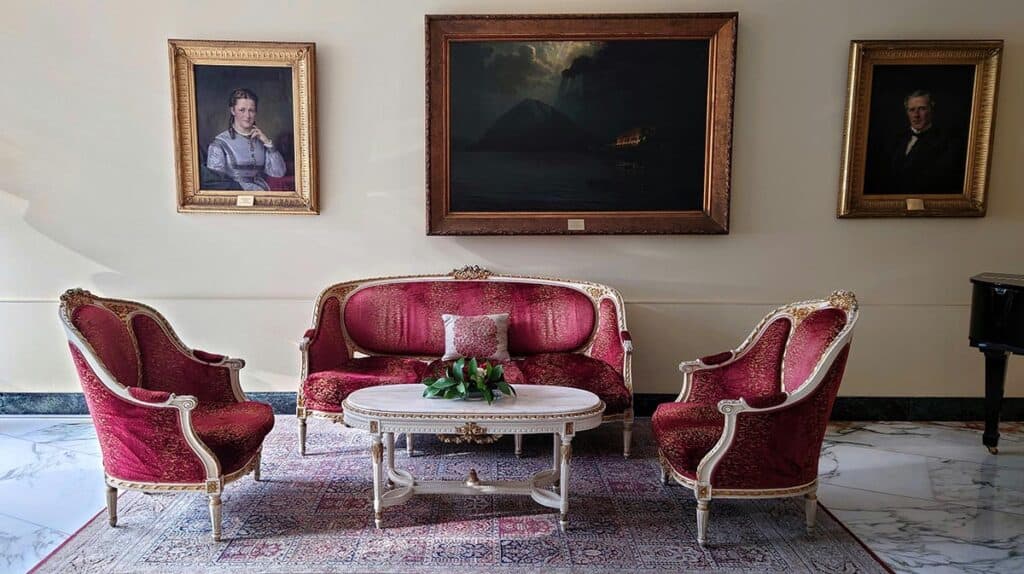
Renaissance interior design emphasizes a balance between rich, warm colors and natural materials to create luxurious yet grounded spaces. It combines deep hues with classical architectural details, using authentic materials to enhance texture and depth in interior spaces.
Popular Colors and Schemes
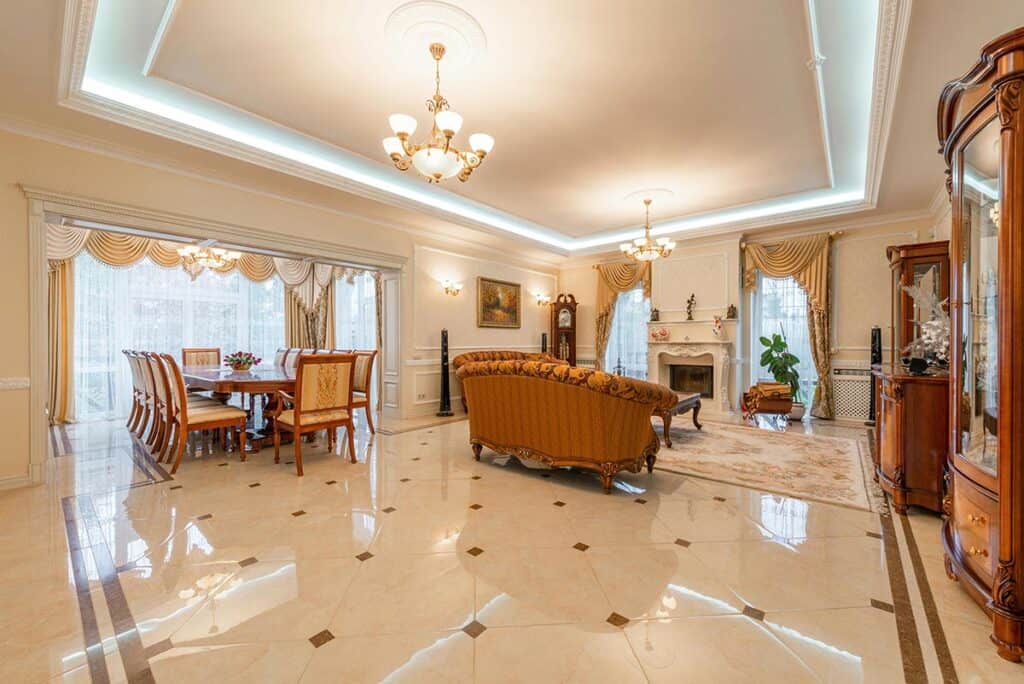
Renaissance interiors often showcase deep reds, golds, greens, and blues. These colors convey warmth and luxury, frequently applied to walls, ceilings, and furnishings to evoke grandeur. Softer pastels and light white shades appear in bedrooms or quieter spaces to bring serenity.
The color schemes emphasize contrast, pairing bold tones with muted backgrounds. Gold accents are common, adding a luminous quality to both paint and decorative elements. This palette supports the intricate architectural details typical of renaissance homes and their revival in contemporary spaces.
Stone and Wood Applications

Stone and wood form the foundation of materials used in renaissance style interiors. Polished marble floors and carved stone columns are common in grand rooms, reflecting the architectural precision of Renaissance architecture.
Wood appears in ceilings, paneling, and furniture, often dark-stained for a rich look. Chestnut, walnut, and oak are preferred for their durability and ability to absorb stains and finishes well. These materials not only provide structural support but also add tactile contrast to painted surfaces.
Their natural textures complement the color palettes to enhance the room’s authenticity.
Use of Textiles
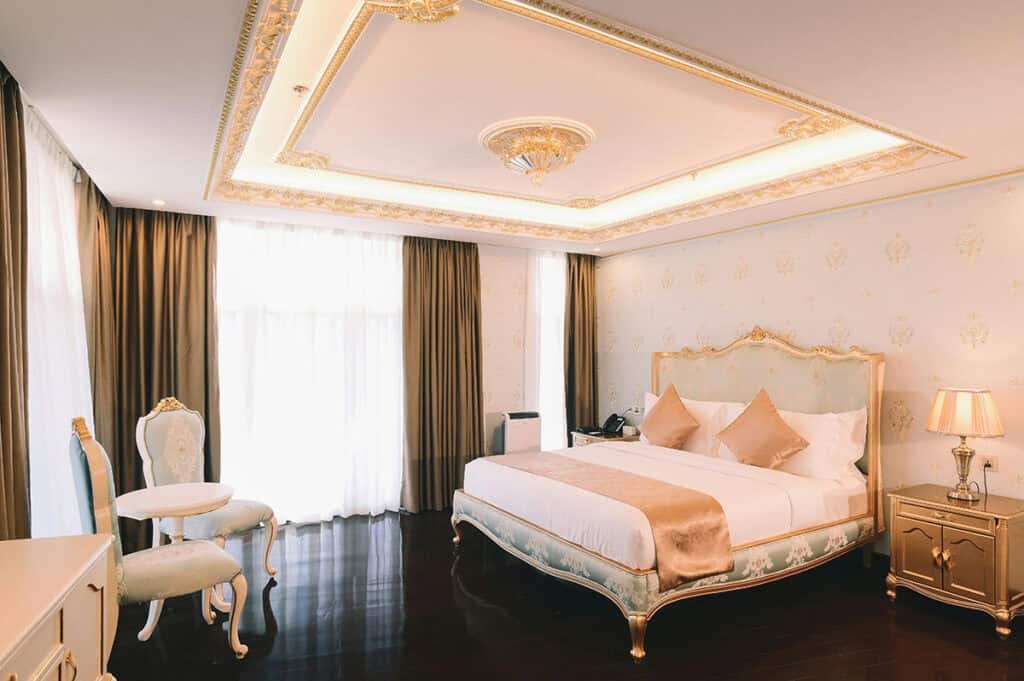
Textiles in Renaissance interior design reinforce both comfort and opulence. Heavy fabrics like velvet and brocade in deep reds and golds are popular choices for curtains, upholstery, and wall hangings.
Patterns often include floral and geometric motifs inspired by Renaissance art. These textiles balance the harder stone and wood elements by introducing softness and warmth. Linen and finer silks appear in private chambers, contributing to a layered, textured aesthetic that influences modern aesthetics through the Renaissance revival.
4. Furniture and Decorative Arts In Renaissance Intrerior Design
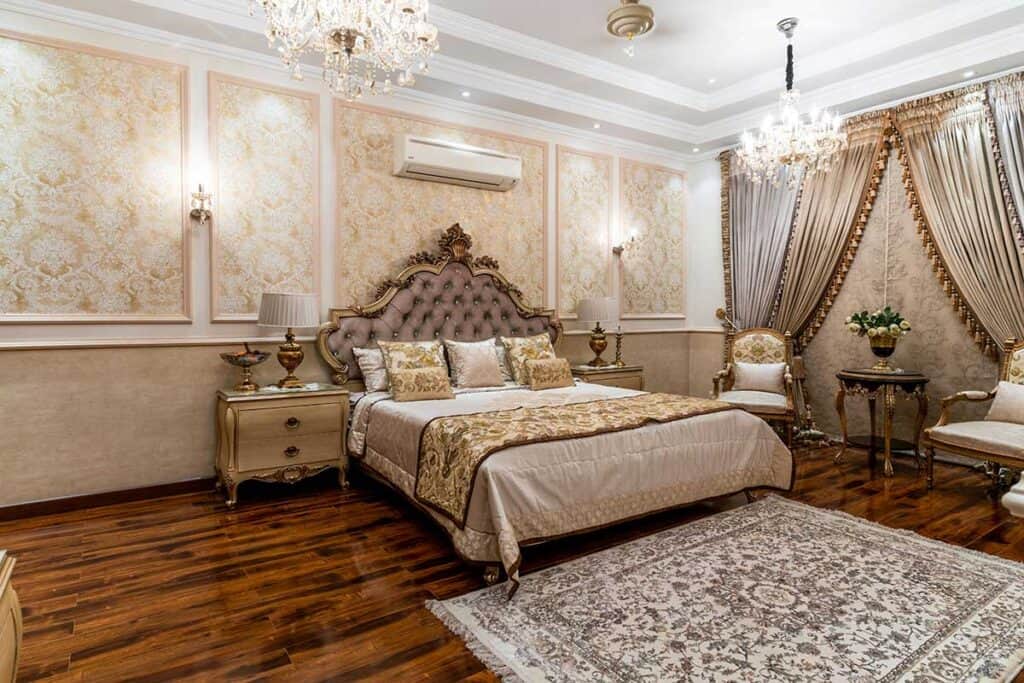
Renaissance interior design focused on balance, intricate detail, and rich materials. The furniture and decorative arts of this period combined functionality with lavish ornamentation, reflecting the cultural rebirth of classical ideals and innovation in craftsmanship.
Classic Renaissance Furniture Pieces
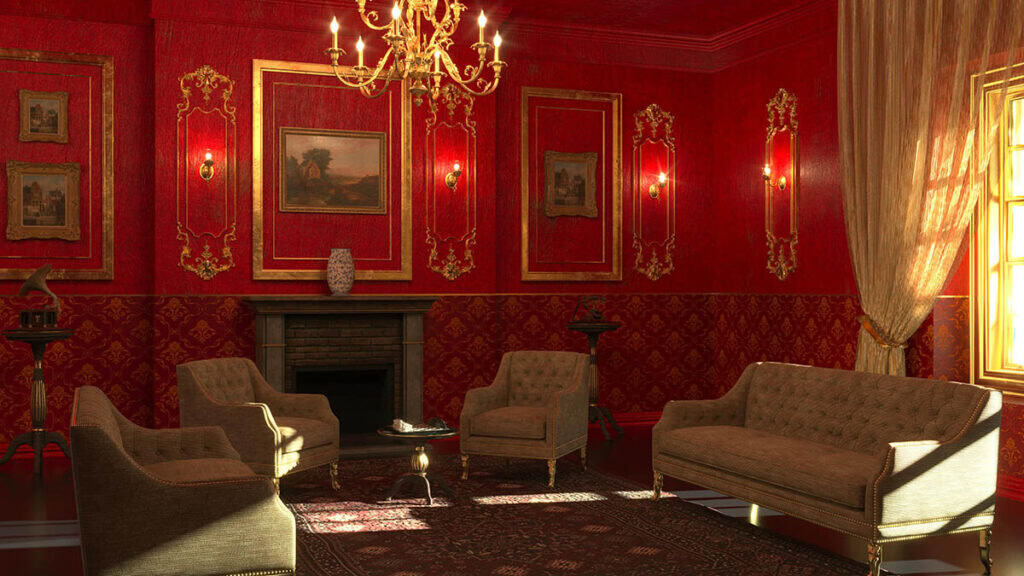
Typical Renaissance furniture emphasized scale and elaborate decoration. Cabinets known as cassone or credenza were common, often used for storage and prominently placed in rooms. These pieces featured heavy wood construction with intricate carvings.
Furniture frequently incorporated bronze mounts and marble tops, showcasing luxury and durability. Chairs and tables were large, sturdy, and displayed balanced proportions that echoed Renaissance architectural principles. Porcelain plaques and inlays also enhanced furniture, adding color and texture while affirming status.
Decorative Motifs and Patterns

Renaissance interiors used motifs inspired by classical antiquity, such as acanthus leaves, grotesques, and mythological figures. These elements were carved, painted, or inlaid into wooden furniture and architectural details.
Symmetry defined the application of these motifs, creating harmony within room layouts. Patterns often repeated in textiles, wall panels, and furniture, unifying the design. Ornate scrollwork, floral designs, and geometric shapes were common, reflecting the period’s celebration of nature and human creativity.
Artwork and Frescoes
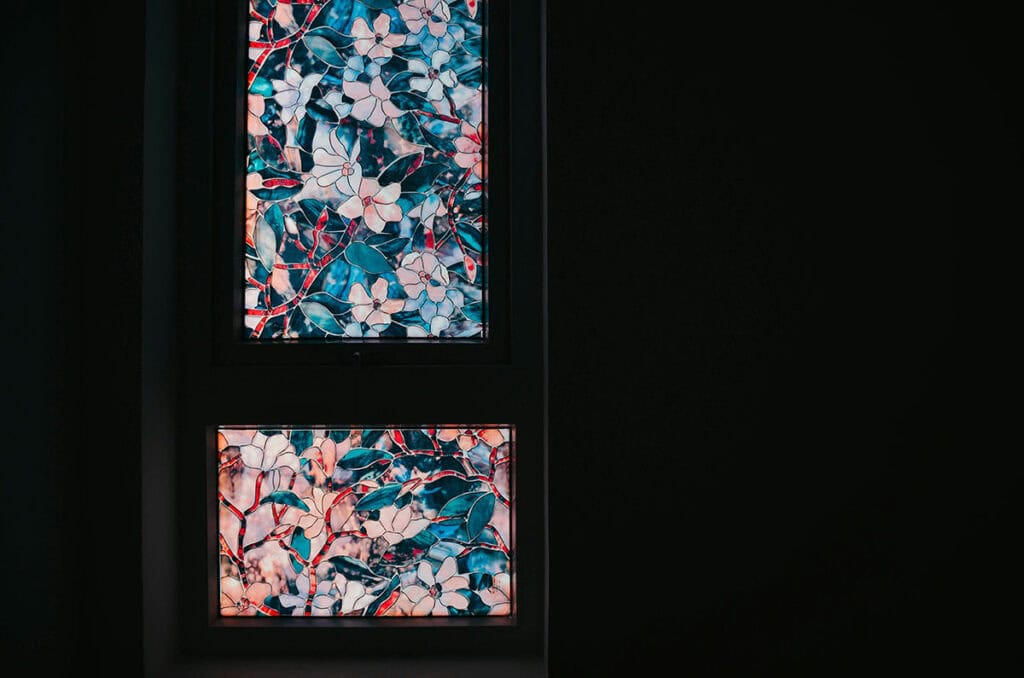
Artwork played a critical role in Renaissance homes, reinforcing intellectual and cultural values. Frescoes decorated walls and ceilings, depicting biblical, mythological, or historical scenes. These murals contributed both color and narrative to interiors.
Paintings and tapestries were also displayed, integrating fine arts directly into living spaces. This blend of decorative painting and sculpture enhanced the immersive experience of Renaissance interiors, aligning with the era’s aim to embody beauty and knowledge in everyday settings.
See also Light Academia Interior Design
5. Modern Interpretations of Renaissance Interior Design
Video by Gaming Star
Modern renditions of Renaissance interior design focus on integrating its distinctive architectural details and style into today’s living spaces. This involves carefully balancing classical elements with functional, contemporary approaches to create interiors that respect historical influence without overwhelming modern needs.
Contemporary designers often incorporate hallmark features of Renaissance interiors, such as fresco-inspired murals, ornate moldings, and rich woodwork, adapting them to fit current spatial demands.
Instead of large, heavy details, scaled-down versions of arches, pilasters, and coffered ceilings are used to evoke the grandeur of Renaissance architecture while maintaining openness and light.
Furniture inspired by Renaissance style emphasizes craftsmanship and intricate carving but is adapted using lighter materials or more streamlined shapes. Decorative motifs like classical columns or medallions appear as subtle accents rather than dominant focal points.
This approach preserves the historical feel without compromising on comfort or usability in modern life.
Blending with Contemporary Styles

Renaissance interior design merges with modern minimalism and contemporary aesthetics through a focus on balance and symmetry. These principles, central to Renaissance architecture, translate well into minimalist layouts that prioritize calm, orderly spaces.
Designers mix contemporary materials such as glass and steel with traditional elements like marble or detailed plasterwork. For example:
- A sleek, modern staircase with iron balustrades can incorporate Renaissance-style scrollwork.
- Open-plan rooms may feature Renaissance-inspired ceiling frescoes combined with modern furniture lines.
This fusion enables interiors to honor Renaissance beauty while having technology and modern lifestyles, creating spaces that feel both timeless and relevant.
Renaissance Interior Design: A Recap
Renaissance interior design, born from the Renaissance era, continues to captivate with its timeless elegance, masterful balance, and celebration of classical beauty. Rooted in the ideals of the Renaissance period, it brings an enduring sense of grandeur to both historical and modern interior spaces.
Whether through intricately detailed ceilings, stately columns, luxurious textiles, or richly carved furniture, Renaissance elements offer a blueprint for creating environments that are both sophisticated and inviting.
Today, these principles are thoughtfully adapted to contemporary living, proving that the spirit of the Renaissance — a pursuit of harmony, artistry, and innovation — remains as relevant and inspiring as ever.





